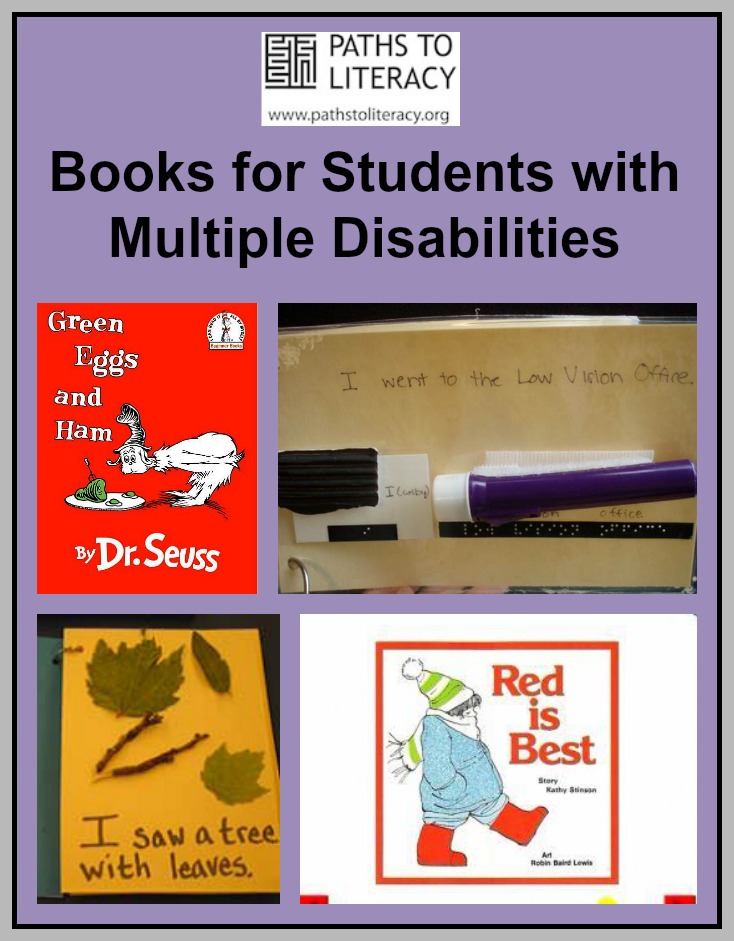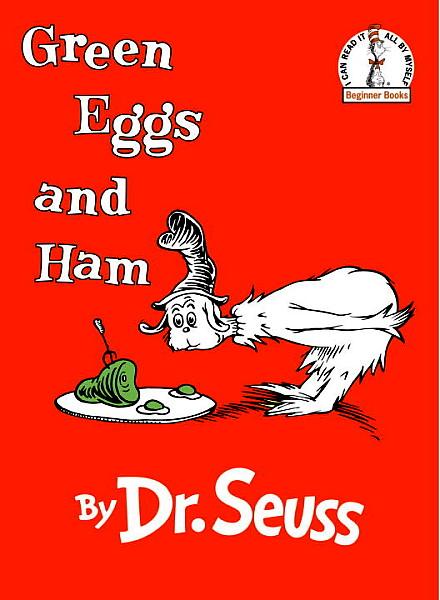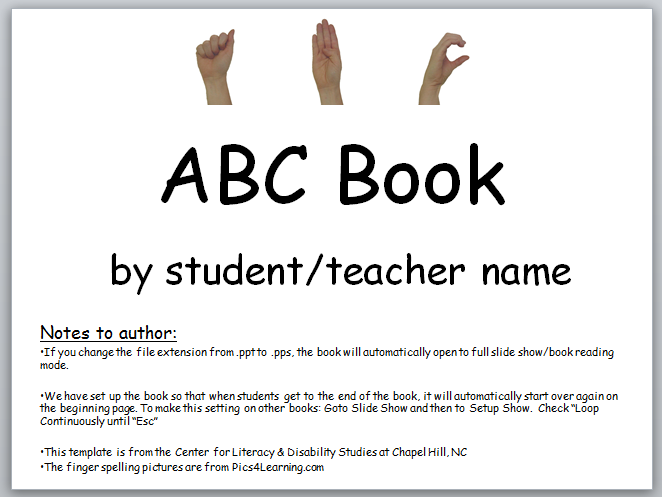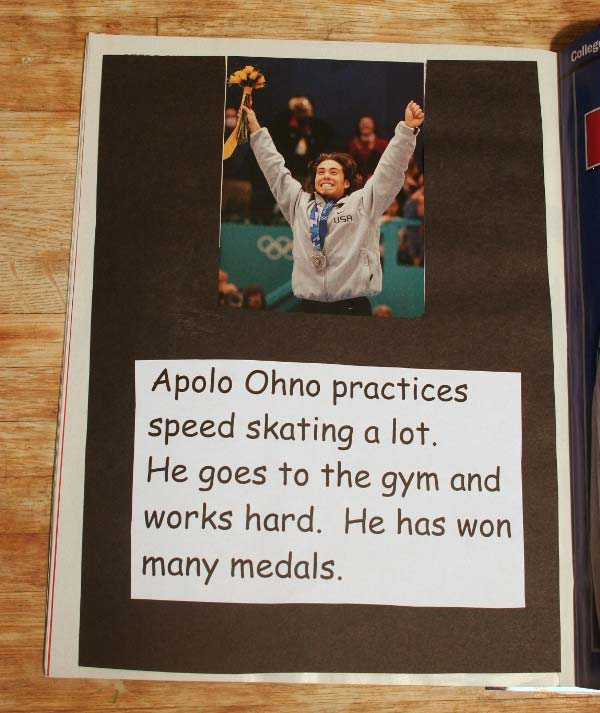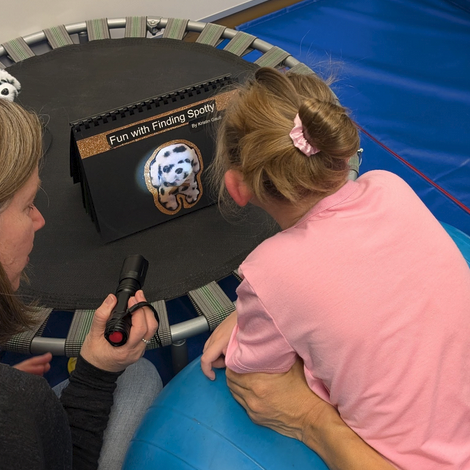Selecting books for students with multiple disabilities presents a range of options, depending on the needs and interests of a particular child. Books may also be used to address many different types of goals, and a variety of books may be appropriate at different times. For example, socializing with peers may be a focus during one literacy activity, handling books and fine motor goals may be a goal at another time, and learning new vocabulary may be an objective during another part of the day.
We hope you will explore the options outlined here and share your ideas for other books and activities!
Experience Books
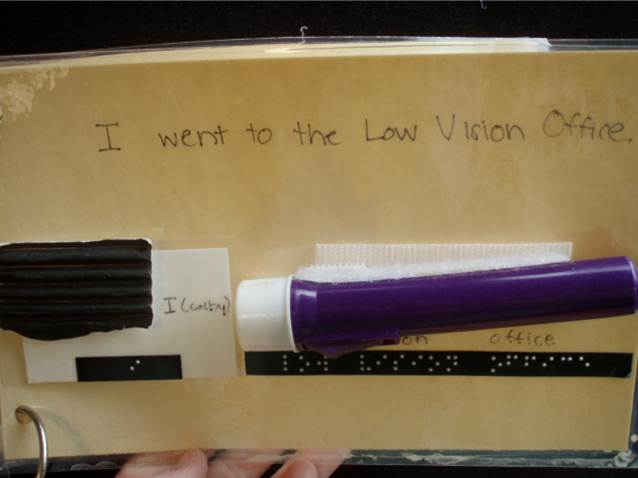
Experience stories, tactile books, and object books all provide an entrance to the world of literacy, using concrete materials relating to the child’s own life. In general the language used is simple and based on key vocabulary within the child’s own experience. Pages usually have braille, print, and real objects or partial objects attached to each page. It is often helpful to use a three-ring binder, as pages tend to be thick.
Object Books
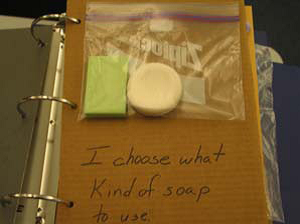
Object books are similar to Language Experience Books, but may be more general than one specific experience. They can be used to explore routines (bath time, meal time, gym class), teach counting, or to reinforce concepts, such as big/little, short/tall, rough/smooth.
As the name suggests, object books are made using real objects, which should be taken from the student’s daily activities and experiences. Whenever possible, students should be included in the creation of the object book. It is important to begin with the part of an object which is most salient to a child and which represents her experience. For example, when choosing an object to represent the playground, a small piece of wood chips that the student touches on the ground may better represent the experience than a miniature plastic swing.
Photo courtesy of Mary Ann Demchak
Predictable books are characterized by structured patterns that allow the reader to anticipate upcoming events in the story. Usually these books have repetitive lines, plots, refrains, rhythms or phrases. They also contain supportive pictures that help tell the story. (For ideas on how to adapt story illustrations see story boxes) Included here is a short list of predictable, early literature. We hope you enjoy these books as much as we do!
E-Books are relatively simple to make. On this page learn how to create electronic books using Microsoft’s Power Point application. It is included in Microsoft office, it is a presentation tool that can combine graphics, animation, sound effects and speech. Sorry guys, these instructions apply to Mac users only, although if you are a PC user you should be able to follow along without too much difficulty.
Because many commercially available books are not accessible to children with multiple disabilities, it is often necessary to adapt the existing book according to the needs of an individual student. Books may be purchased with braille text, but additional modifications may be necessary to make the book interesting and meaningful to a child with additional disabilities.
